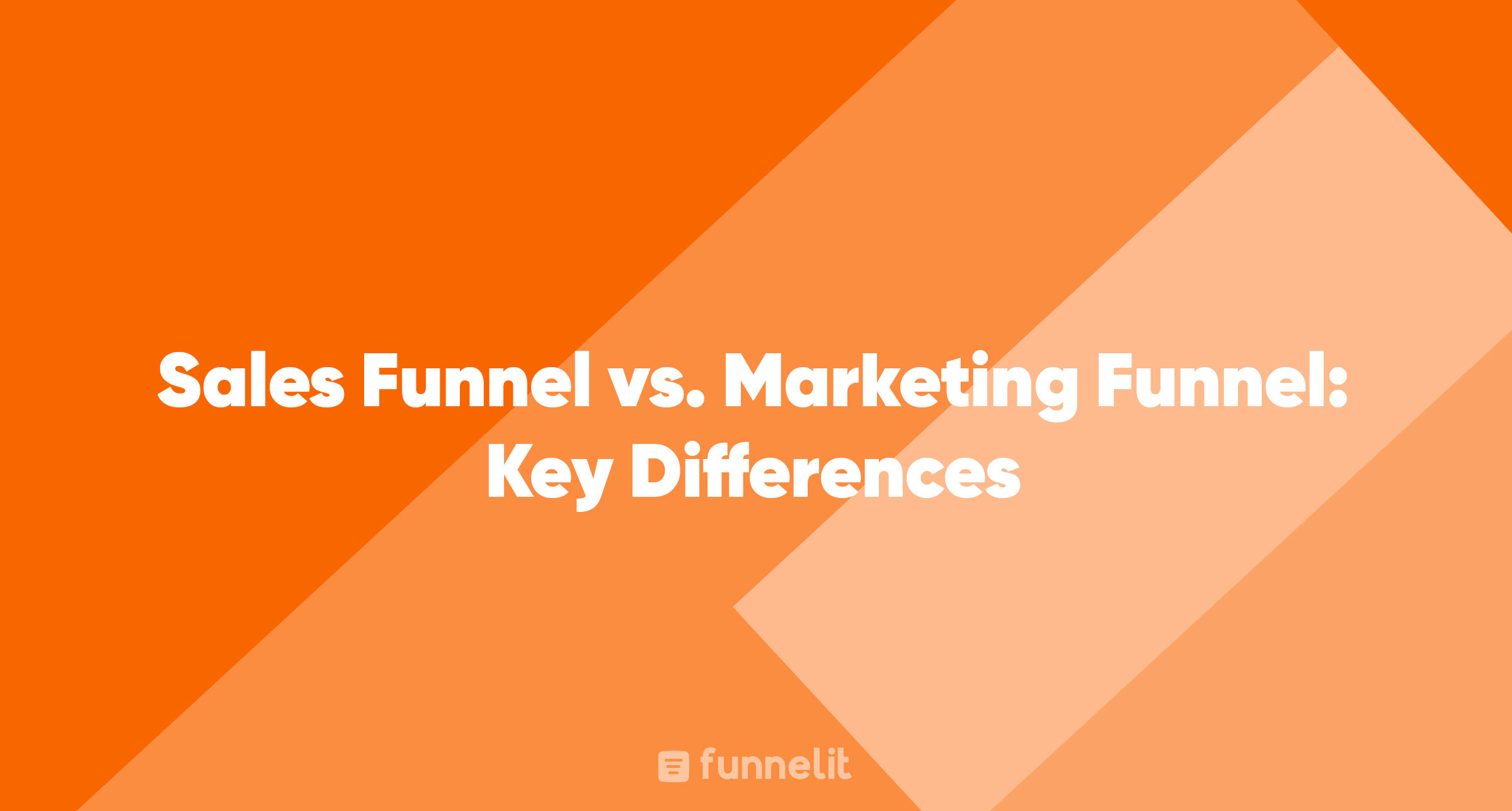Are you confused about the difference between a sales funnel and a marketing funnel? You're not alone. These terms are often used interchangeably, but they actually represent distinct aspects of the customer journey. Understanding the nuances between the two can help you optimize your business strategies and drive more conversions. In this article, we will explore the key differences between sales funnels and marketing funnels, and how to leverage each to achieve your business goals.
What is a Marketing Funnel?
A marketing funnel is a framework that illustrates the customer's journey from initial brand awareness to becoming a paying customer. It encompasses the entire relationship-building process and focuses on nurturing prospects through various stages. The goal of a marketing funnel is to guide potential customers through the buyer's journey, from awareness to consideration to action.
The Stages of a Marketing Funnel
A marketing funnel typically consists of five stages:
- Awareness: At this stage, customers become aware of your brand and develop a positive perception of it.
- Interest: Customers show interest in your products or services and consider them as potential solutions to their needs.
- Desire or Consideration: Customers develop a strong interest in your offerings but may still have some doubts or hesitations.
- Action or Conversion: Customers are ready to make a purchase and convert into paying customers.
- Loyalty and Advocacy: Customers who have made a purchase become loyal and may even advocate for your brand by referring others.
The marketing funnel emphasizes the importance of building a strong brand presence and creating valuable content and experiences. It focuses on nurturing the customer's relationship with your brand, rather than direct sales interactions.
What is a Sales Funnel?
While a marketing funnel covers the entire customer journey, a sales funnel zooms in on the specific process of turning leads into customers. It focuses on the tactical steps and interactions that lead to a sale. A sales funnel is designed to guide prospects through the stages of the buyer's journey, with the ultimate goal of closing a deal.
The Stages of a Sales Funnel
A sales funnel typically consists of three stages:
- Top of the Funnel: This is the awareness stage, where prospects first interact with your sales team. The objective here is to move them to the next stage.
- Middle of the Funnel: This is the consideration or qualification stage. Prospects have expressed interest, and sales has the opportunity to influence their decision.
- Bottom of the Funnel: This is the conversion and loyalty stage. Once a deal has progressed to this stage, it’s all about finalizing the sale, overcoming objections, and fostering customer loyalty.
The sales funnel focuses on the specific actions and touchpoints that lead to a purchase. It is more transactional in nature compared to the relationship-building focus of the marketing funnel.
Building Alignment Across Sales and Marketing Funnels
While sales and marketing funnels have distinct purposes, they are interconnected and should work in harmony to drive results. The lines between the two funnels have blurred as marketing plays a larger role in late-stage nurturing, and sales professionals become more adept at generating their own leads.
By aligning your sales and marketing efforts, you can create a more effective and complementary funnel system. This alignment can be facilitated by using tools like LinkedIn Lead Gen Forms and LinkedIn Sales Navigator, which support a unified approach to relationship-building. Qualified leads can seamlessly transition from marketing to sales, while marketing benefits from valuable relationship intelligence.
Some companies even operate under a unified "conversion funnel," recognizing that both sales and marketing efforts contribute to the ultimate goal of conversion. Regardless of how you conceptualize and structure your funnels, measuring and analyzing them in a strategic way is key to boosting sales and marketing results.
Choosing the Right Technology Tools
To effectively manage your sales and marketing funnels, it's essential to leverage the right technology tools. These tools can automate processes, streamline communication, and provide valuable insights to enhance your funnel strategies.
For smaller businesses and beginners, there are user-friendly marketing and sales automation software options available. These tools offer comprehensive solutions to optimize your funnels and achieve significant results.
For medium and large organizations, a funnel management software alone may not be sufficient. Robust communication tools are necessary to support sophisticated marketing strategies and ensure seamless coordination between sales and marketing efforts. Consider implementing a virtual call center solution, which enables efficient customer interactions across multiple channels like phone, email, and web chat.
Other valuable tools for optimizing sales and marketing funnels include email automation tools, sales training tools, prospecting tools, outreach tools, advertising tools, email address finders, lead generation tools, and CRM (Customer Relationship Management) systems. Choose the tools that align with your business needs and goals to maximize the effectiveness of your funnels.
Conclusion
Understanding the differences between sales funnels and marketing funnels is crucial for developing effective business strategies. While marketing funnels focus on relationship-building and guiding prospects through the entire customer journey, sales funnels zoom in on the specific steps that lead to a sale. Both funnels play vital roles in driving conversions and generating revenue.
By aligning your sales and marketing efforts, leveraging the right technology tools, and continuously measuring and analyzing your funnels, you can optimize your business processes and achieve greater success. Remember, the key is to create a seamless and complementary experience for your customers, from the first touchpoint to the final purchase.
Investing in the right strategies, tools, and alignment between sales and marketing will help you build strong relationships with your customers and drive long-term growth for your business. So, take the time to understand the differences between sales funnels and marketing funnels, and implement strategies that leverage the strengths of each to maximize your business's potential.
